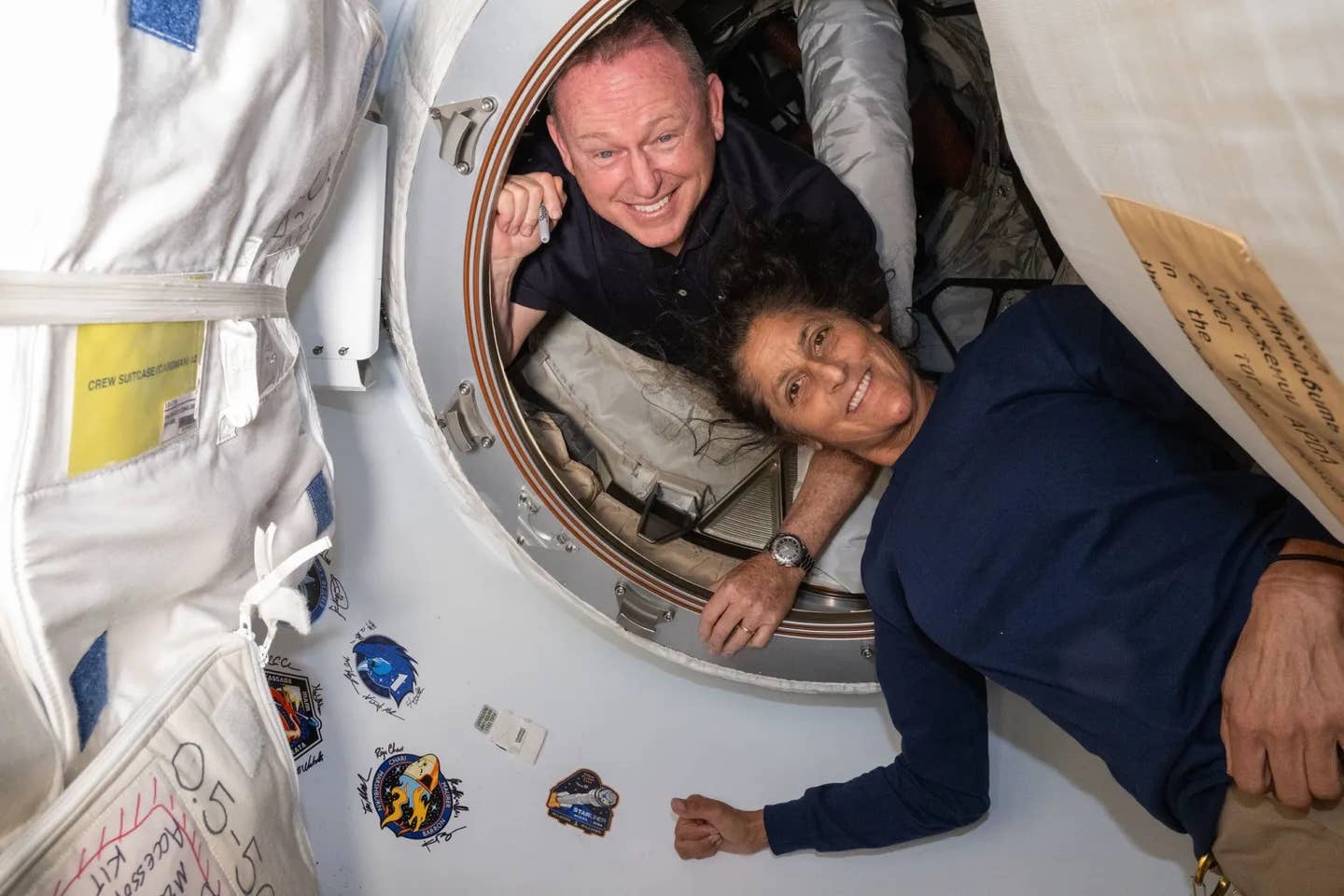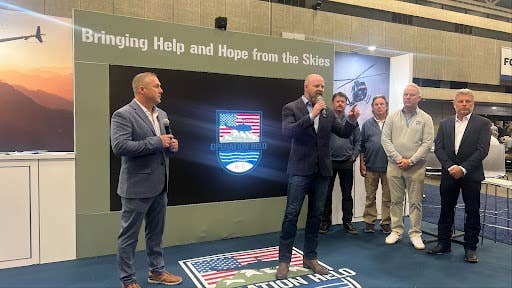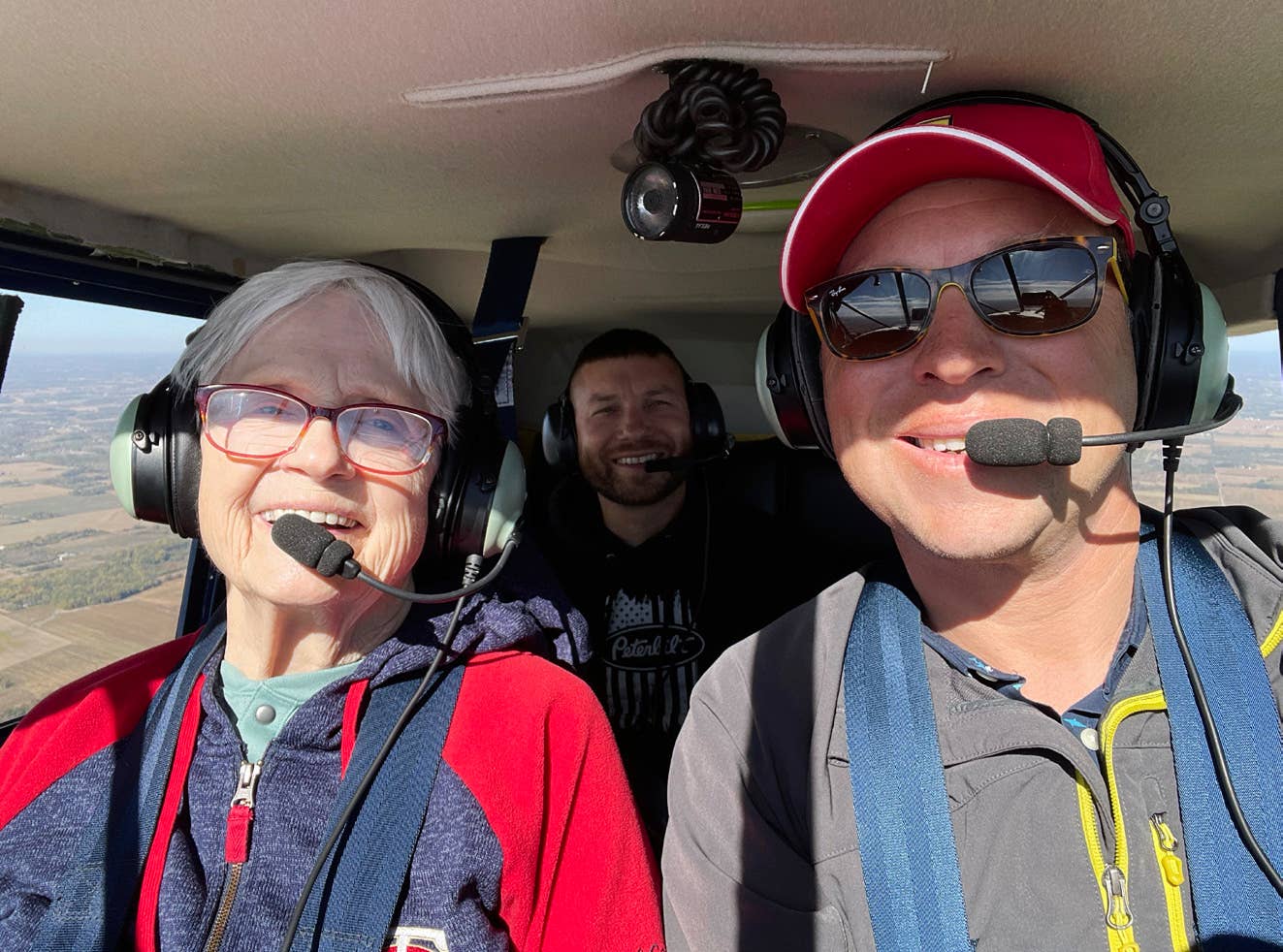Transgender Pilots Just Want To Fly
Acceptance of transgender pilots is improving in the aviation community but advocates say more progress is needed across visibility, communication, and understanding.

Pilot Tamsyn Waterhouse won a legal battle with the FAA over requirements for her third-class medical certificate. [Courtesy: Tamsyn Waterhouse]
When Tamsyn Waterhouse’s father took her flying in his red and white Cessna 150 as a child growing up in Manitoba, Canada, he set her on a path toward becoming a professional pilot. What she didn’t know at the time was how challenging that journey would be.
By the time she was in graduate school, Waterhouse says she realized that she had to transition to female to be herself. The hurdles began a few years later as she was a pilot closing in on getting her IFR in California.
“Being trans and being a pilot was one of those situations where it didn't occur to me that there was going to be a problem until there was a problem,” Waterhouse told FLYING. “I’d had such a good experience up until that point with transitioning.” That experience included a good support network of family, friends, doctors, and employers, she said. Joining a flying club, Waterhouse found valuable instruction and support for her aviation goals.
It wasn't until she went to renew her third-class medical certificate that she "encountered a really abrasive AME [aviation medical examiner],” Waterhouse recalled. “The moment I said, ‘trans’ he just said, ‘We're done.’”
Troubled and confused, she reached out to the FAA for help. Instead, the FAA said Waterhouse could not receive her medical until she submitted a report from her doctor and underwent extensive, burdensome, and expensive psychological and psychiatric testing.
The news left Waterhouse feeling devastated. Providing what the FAA wanted would have forced her to undergo days of examinations, including personality, projective, and intelligence tests. The requirements ended up grounding many transgender pilots and some even lost their jobs, according to the National Center for Transgender Equality.
From her perspective, Waterhouse’s identity was being treated as pathological. “It was the first time I really experienced discrimination against myself,” she recalled.
When she called her AME back, he “basically said, ‘You're on your own. Good luck, bye.’” Waterhouse then reached out to the National Center for Transgender Equality and the Transgender Law Center for help. Two U.S. representatives at the time —Mike Honda and Barney Frank—also joined the fight. Together, they waged a three-year battle to change FAA medical evaluation policies for transgender pilots.
Meanwhile, frustrated and optimistic, she kept plugging away gradually at flight training—including practicing for her instrument rating—not knowing whether she would ever even be allowed the opportunity for a check ride.
Finally, in 2012: victory. The FAA published revised AME guidelines that included new policies for transgender pilots. The new guidelines eliminated unnecessary psychological testing. Under certain conditions, transgender pilots are required to submit current clinical records, along with an evaluation by a psychiatrist or psychologist, and a report on any recent surgery.
Shortly thereafter, during Waterhouse’s next AME appointment, she was issued a medical on the spot.
Navigating life as a transgender pilot includes multiple challenges, including feelings of isolation. For Waterhouse, it sometimes meant “being alone. Feeling like there is nobody like you. There are no role models, or there are very few role models.” Another factor: Dealing with ignorance. Waterhouse has experienced more than one flight training instructor over the years who has made racist, misogynistic, or homophobic comments in front of students.
Opening Doors
Getting her medical not only allowed Waterhouse to progress with her flight training, it also opened doors to an entire aviation career. She was able to build hours and pick up more training, get additional ratings, and her instructor certificate.
Her career as a software engineer took her to Japan, where Waterhouse began contracting as a CFI at a U.S. Air Force Aero Club and flight training center at Tokyo’s Yokota Air Base.
“The glorious thing about flying is the visibility,” Waterhouse said. Although she loves IFR for technical reasons, for her, the joy of flying means seeing “the world from above, without borders or labels…the minutiae of traffic lights and buildings…to be able to see what a city looks like altogether at once.” Flying “gives you the feeling that you’re moving under your own control and your own power, especially in an aircraft like a Zlin or a Mooney—relative to a Cessna Skyhawk. You feel very intimately connected to the air.”
Progress and Work To Be Done
Waterhouse is just one of countless members of the transgender aviation community who’ve suffered from incivility and outright discrimination simply because of who she is. Advocates say increased cultural visibility has led to significant improvements in recent years resulting in learning, conversations, and greater acceptance.
“Obviously, great things have been done in terms of the FAA medical certification process, but there’s still much work to do in terms of total acceptance,” said Brian Gambino, president of the National Gay Pilots Association (NGPA), the largest organization of lesbian, gay, bisexual, and transgender pilots, and other aviation professionals and allies.
“There's a lot more work to do to achieve equal rights and equal treatment of transgender pilots, both on the commercial spectrum—and even more importantly—in the general aviation spectrum,” Gambino said. “A lot of hate and vitriol has been coming from, specifically, the general aviation sector towards pilots who identify as LGBTQ.”
One reason he said GA can be a more challenging arena for learning, communicating, and acceptance is because GA pilots can “pick and choose exactly who they fly with,” Gambino said. “They’re not required to show up to work to be respectful or show up to the aircraft and be respectful to people that they don't align with.”
It’s worth noting that although he identifies as a white, gay man, Gambino said it’s very hard for him—or anyone outside the transgender community or other minority groups—to fully understand their experiences. Every group’s experience is different.
Nonetheless, many aviation companies and universities are trying to improve mutual understanding through internal Employee Resource Groups (ERGs).
“It’s a place to gather and share ideas,” said Gambino, a pilot for JetBlue Airways. ERGs can serve as company sounding boards to assist with potentially challenging human resource issues or to advise on best practices for inclusive language in corporate rule books, handbooks, and employee publications.
The NGPA offers an online portal where members of the aviation community can report incidents of transphobia. They also work to educate companies throughout the industry on how to recognize relevant issues and improve their internal culture for transgender pilots. NGPA sponsors include Alaska Airlines, Southwest, Delta Air Lines, American, United, and many other commercial aircraft operators. Also, the Transgender Law Center has an online help desk with ways to contact them for support, guidance, and resources.
A New Chapter
As for Waterhouse, she’s about to begin a new chapter in her aviation career. After nearly five years as a CFI, she has enlisted in the Canadian Air Force as a direct entry officer pilot. Although she doesn’t know yet whether she’ll be piloting fixed wing or helicopters, Waterhouse is excited about learning to fly military aircraft.
These days, Waterhouse doesn’t spend much time thinking about her FAA victory, although she does believe much more can be done to level the playing field for transgender pilots.
“It's got to start with who has the money, right?—and that means more partnerships and more work from the airlines. And that doesn't just mean proactively diverse hiring strategies,” she said. Waterhouse is calling for more corporate partnerships with LBGTQ+ pilot organizations and women’s aviation groups to make it less arduous for minorities and women to become pilots.
The FAA has made progress toward removing friction for transgender pilots, she said, but so much more can be done. “I’d love to see [the FAA] simply be more proactive in saying, ‘Yeah, you can be a pilot if you're trans. And you know, you can be a pilot if you're a woman.’”
“I’m not in a rush to blame the FAA. Aeromedical, I could say, was behind the times, and they're doing better now,” Waterhouse said. She pointed out that recent AME guide revisions have helped groups in addition to transgender pilots—including those with diabetes or sleep apnea.
“We're opening up aviation to more and more people,” she said. “Bit by bit.”

Sign-up for newsletters & special offers!
Get the latest FLYING stories & special offers delivered directly to your inbox






